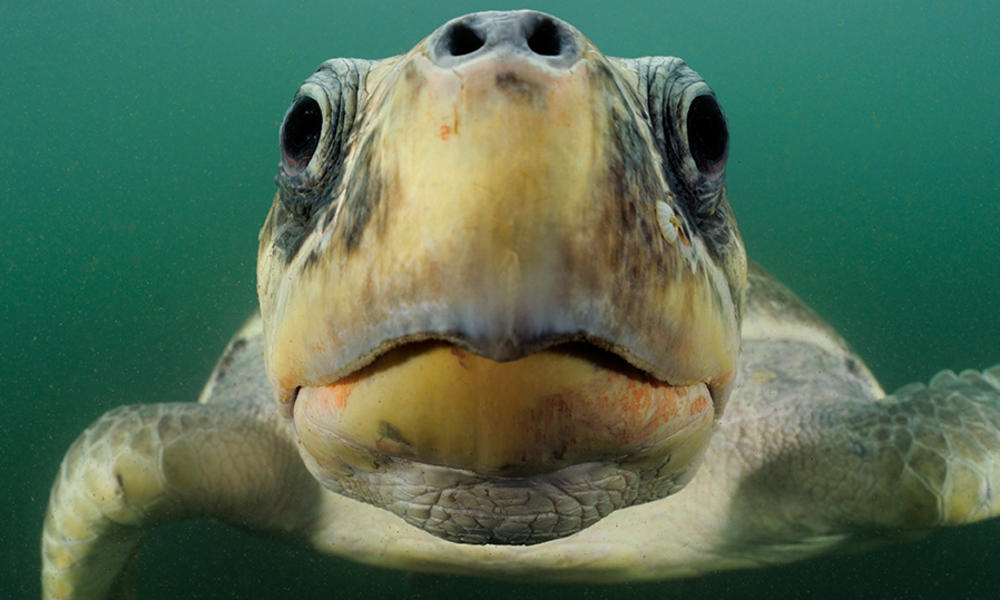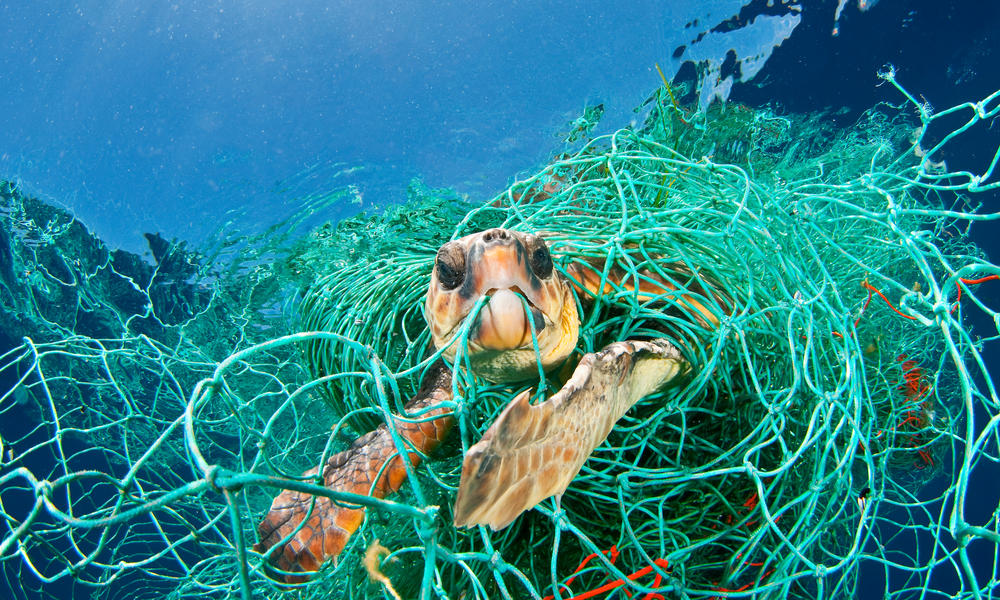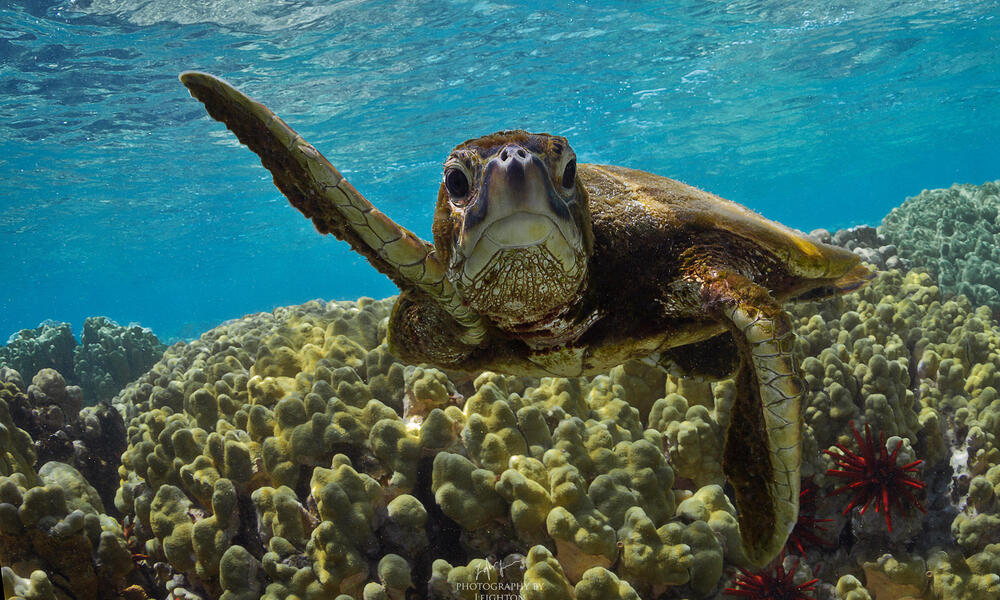Where Do The Sea Turtles Live - If you love spending time on the beach, you might have seen baby sea turtles hatching out of their eggs and making their way to the ocean. Have you ever wondered how big these little creatures are when they are born? According to recent studies, baby sea turtles typically measure about two inches in length and have soft shells that harden as they grow. The turtles are extremely vulnerable at this age as they make their way into the ocean and start their journey in life.
How Long Do Sea Turtles Live?
Introduction
Sea turtles are among the oldest creatures on earth and have been around for more than 100 million years. These fascinating reptiles can live for many decades and play a critical role in the marine ecosystem. If you want to learn more about these amazing creatures, you have come to the right place. In this article, you will discover some exciting facts about sea turtles, including how long they can live, what they eat, where they habitat, and much more.
How Long Do Sea Turtles Live?
One of the most interesting things about sea turtles is their long lifespan. Many species of sea turtles can live for up to 80 years or more in the wild. However, the exact lifespan of a sea turtle depends on factors such as its species, habitat, and lifestyle. For example, while some species of sea turtles are larger and live longer than others, turtles that live in polluted waters or have suffered traumatic injuries may have a shorter lifespan.
What Do Sea Turtles Eat?
Sea turtles are omnivores, which means that they eat both plants and animals. However, their diet varies depending on their species, habitat, and age. For example, loggerhead turtles are carnivorous and feed mainly on crabs, clams, and sea urchins. On the other hand, green turtles are herbivorous and feed mainly on seagrass and algae, which gives them their unique green coloration. Depending on their age, sea turtles may also eat jellyfish, sponges, and small fish.
Where Do Sea Turtles Live?
Sea turtles live in warm and temperate waters around the world. Some species, such as the loggerhead turtle, are found in the Atlantic, Pacific, and Indian Oceans, while others, such as the olive ridley turtle, are found only in specific regions, such as the Gulf of Mexico and the Indian Ocean. Sea turtles also tend to migrate great distances during their lifetimes. For example, green sea turtles that hatch on the east coast of Florida may travel all the way to South America during their lives.
Threats to Sea Turtles
Sea turtles face many threats in the wild. One of the biggest threats comes from humans, who engage in activities such as fishing, pollution, and beach development that can harm turtle habitats and populations. Other threats to sea turtles include poaching, climate change, and ocean plastic pollution. If you want to help protect sea turtles, you can support organizations that work to protect their habitats, avoid using single-use plastics, and make sure you follow local wildlife protection laws when visiting sea turtle habitats.
Conclusion
If you want to learn more about sea turtles, there are many resources available online and in your local library. Whether you are interested in their lifespan, dietary habits, or habitat, there is always something new and exciting to discover about these amazing creatures. By taking steps to protect sea turtle habitats and populations, you can help to ensure that they continue to thrive for many years to come.

Amazing Facts About Sea Turtles
Introduction
Sea turtles are one of the oldest creatures on earth and have been around for more than 100 million years. These fascinating reptiles can live for many decades and play a critical role in the marine ecosystem. Here are some amazing facts about sea turtles that you might not know.
Sea Turtles Come in Many Different Species
While all sea turtles share some common characteristics, there are actually seven different species of sea turtles found around the world. These include the green turtle, loggerhead turtle, hawksbill turtle, Kemp's ridley turtle, olive ridley turtle, flatback turtle, and leatherback turtle. Some species are more common than others, and each has its own unique physical and behavioral characteristics.
Sea Turtles Can Hold Their Breath for A Long Time
One of the most amazing things about sea turtles is their ability to hold their breath for extended periods of time. In fact, some species of sea turtles can stay underwater for up to five hours at a time. This incredible feat is made possible by their slow metabolism, which allows them to conserve oxygen for longer periods of time.
Sea Turtles Can Migrate Long Distances
Sea turtles are known for their remarkable ability to migrate great distances during their lifetimes. For example, loggerhead turtles that hatch on the east coast of the United States may migrate all the way to the Azores Islands in the Atlantic Ocean. Green turtles that hatch in Florida may travel all the way to South America during their lives. This incredible migration takes place over many years and is an essential part of the sea turtle's life cycle.
Sea Turtles Are Endangered
Despite their amazing abilities and critical role in the ecosystem, sea turtles are endangered creatures that face many threats in the wild. The biggest threats to sea turtles include habitat loss, pollution, illegal hunting, and accidental capture in fishing nets. To protect these amazing creatures, it is essential to take steps to reduce these threats and ensure that sea turtle habitats are protected and conserved for future generations.

How You Can Help Protect Sea Turtles
Introduction
If you love sea turtles and want to help protect them, there are many simple steps you can take to make a difference. By reducing your environmental impact, supporting conservation efforts, and spreading awareness about the importance of sea turtles, you can help to ensure that these amazing creatures continue to thrive in the wild.
Reduce Your Use of Single-Use Plastics
Plastic pollution is one of the biggest threats to sea turtles and other marine creatures. To reduce your impact on the environment, try to reduce your use of single-use plastics such as straws, bags, and cups. Instead, bring your own reusable items or use environmentally friendly alternatives. By reducing your plastic footprint, you can help to protect sea turtle habitats and reduce the amount of plastic in the ocean.
Support Local Conservation Efforts
Many organizations work to protect sea turtle habitats and populations around the world. By supporting these efforts through donations, volunteer work, or social media campaigns, you can help to make a difference in the fight to protect these amazing creatures. You can also support local eco-tourism initiatives that promote sustainable use of sea turtle habitats.
Spread Awareness About Sea Turtles
One of the most effective ways to protect sea turtles is to spread awareness about their importance to the marine ecosystem. By sharing information about sea turtles on social media, discussing their conservation with friends and family, and educating yourself about these amazing creatures, you can help to ensure that sea turtle habitats and populations are protected for future generations.
Conclusion
Sea turtles are amazing creatures that play a critical role in the marine ecosystem. However, they face many threats in the wild and need our help to survive. By reducing our plastic use, supporting conservation efforts, and spreading awareness about sea turtle conservation, we can help to ensure that these amazing creatures continue to thrive in the wild.

How Long Do Sea Turtles Live?
Introduction
Sea turtles are some of the oldest creatures on earth and can live for many decades. However, the exact lifespan of a sea turtle depends on many factors. In this article, we will take a closer look at how long sea turtles can live and what factors influence their lifespan.
Factors That Influence Sea Turtle Lifespan
Several factors influence how long sea turtles can live. These include their species, environmental conditions, and lifestyle habits. For example, some species of sea turtles are larger and live longer than others. The green sea turtle, for example, can live for up to 80 years, while the loggerhead turtle usually lives for 60 years or less. Environmental conditions can also impact sea turtle lifespan. Turtles living in polluted or overfished waters may have a shorter lifespan than those living in pristine habitats. Finally, lifestyle habits, such as the amount of time spent foraging and the frequency of mating, can also impact sea turtle lifespan.
How Long Can Sea Turtles Live?
While sea turtles can live for many decades, there is no one answer to the question of how long sea turtles can live. The lifespan of a sea turtle depends on many factors and can vary greatly among individuals. However, most sea turtles live for several decades in the wild, with some species living up to 80 years or more under ideal conditions.
What Can Impact Sea Turtle Lifespan?
Several factors can impact sea turtle lifespan in the wild. These include habitat loss, pollution, climate change, and egg poaching. Habitat loss can have a significant impact on sea turtle populations, as it can reduce the availability of nesting sites, limit the amount of foraging areas, and lead to increased predation. Pollution and climate change can also impact sea turtle populations, as both can alter the temperature, salinity, and nutrient content of the ocean. Finally, egg poaching is a major threat to sea turtle populations as it can reduce the number of hatchlings that make it to the ocean.
Conclusion
Sea turtles are amazing creatures that can live for many decades in the wild. However, they face many threats, including habitat loss, pollution, and egg poaching. By taking steps to reduce these threats and protect sea turtle habitats, we can help to ensure that these amazing creatures continue to thrive in the wild.

What You Need to Know About Sea Turtles
Introduction
Sea turtles are fascinating creatures that have captured the hearts of people around the world. These amazing creatures play a crucial role in the marine ecosystem and face many threats in the wild. In this article, we will take a closer look at some key facts about sea turtles and what you can do to help protect them.
Sea Turtles Come In Many Different Species
While all sea turtles share some common characteristics, there are seven different species of sea turtles found around the world. These include the green turtle, loggerhead turtle, hawksbill turtle, Kemp's ridley turtle, olive ridley turtle, flatback turtle, and leatherback turtle. Each species has its own unique physical and behavioral characteristics and is adapted to living in different environments.
Sea Turtles Face Many Threats in the Wild
Despite their importance to the marine ecosystem, sea turtles face many threats in the wild. These threats include habitat loss, pollution, climate change, egg poaching, and accidental capture in fishing nets. If we do not take action to protect sea turtles and their habitats, these threats could lead to extinction for some species of sea turtles.
How Long Do Sea Turtles Live?
Sea turtles can live for many decades in the wild, with some species living up to 80 years or more under ideal conditions. Their lifespan depends on factors such as their species, habitat, and lifestyle habits. Green sea turtles, for example, can live for up to 80 years, while loggerhead turtles usually live for 60 years or less. However, environmental conditions, such as pollution and habitat loss, can reduce the lifespan of sea turtles by making it more difficult for them to find food and safe nesting sites.
How Can You Help Protect Sea Turtles?
There are many ways to help protect sea turtles and their habitats. Some of these include reducing your use of single-use plastics, supporting conservation efforts, and spreading awareness about sea turtle conservation. By taking steps to protect sea turtles and their habitats, you can help to ensure that these amazing creatures continue to thrive for generations to come.
Conclusion
Sea turtles are some of the most fascinating creatures on earth and play a critical role in the marine ecosystem. However, they are facing many serious threats in the wild that require our attention and action. By learning more about sea turtles, raising awareness about their conservation, and taking steps to protect their habitats, we can help to ensure that these amazing creatures continue to thrive in the wild.
Why You Should Care About Sea Turtles
Introduction
Sea turtles are amazing creatures that are important to the marine ecosystem and have cultural significance in many parts of the world. However, they face many threats in the wild that require our attention and action. In this article, we will take a closer look at why you should care about sea turtles and what you can do to help protect them.
Sea Turtles Are Important to the Marine Ecosystem
Sea turtles are essential to the marine ecosystem as they help to maintain the balance of marine life. They feed on jellyfish, sponges, and small fish, which helps to control the population of these species. In turn, sea turtles are preyed upon by sharks and other large predators, which helps to keep their populations in check. By keeping the marine ecosystem healthy, sea turtles ensure that other marine creatures can survive and thrive in their habitats.
Sea Turtles Have Cultural Significance
Sea turtles have cultural significance in many parts of the world, particularly in areas where they are commonly found. For example, in some cultures, sea turtles are seen as symbols of longevity, wisdom, and perseverance. In other cultures, sea turtles are a source of food, medicine, and other important resources. By protecting sea turtles and their habitats, we can help to preserve these important cultural traditions and ensure that they are passed down to future generations.
Threats to Sea Turtles
Despite their importance to the marine ecosystem and cultural significance, sea turtles face many threats in the wild. These include habitat loss, pollution, climate change, egg poaching, and accidental capture in fishing nets. Some species of sea turtles are critically endangered and may face extinction if we do not take action to protect them and their habitats.
How You Can Help Protect Sea Turtles
There are many ways to help protect sea turtles and their habitats. Some of these include reducing your use of single-use plastics, supporting conservation efforts, and spreading awareness about sea turtle conservation. By taking action to help protect sea turtles, you can help to ensure that these amazing creatures continue to thrive in the wild.
Conclusion
Sea turtles are amazing creatures that play a critical role in the marine ecosystem and have cultural significance in many parts of the world. However, they face many threats in the wild that require our attention and action. By learning more about sea turtles, raising awareness about their conservation, and taking steps to protect their habitats, we can help to ensure that these amazing creatures continue to thrive for generations to come.
Find more articles about Where Do The Sea Turtles Live